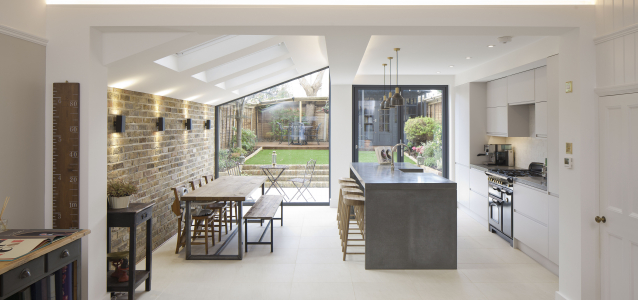Stairs and Staircases – Building Regulations – Part K Any building works to homes requires compliance with the building regulations and the Approved Documents set out guidance on how to achieve this. Part K of the Approved Documents, titled ‘Protection from falling, collision and impact’ covers stairs and staircases. How steep can stairs… Read more »
Posts Categorized: Legal Considerations
10 Year Rule (previously 4 year rule) – Planning Permission
What has changed? Previously, the “4-year rule” applied to unauthorised building work or a change of use to a single dwelling house, meaning enforcement action could only be taken within four years of completion. However, as of April 25, 2024, the Levelling-up and Regeneration Act 2023 extended this enforcement period to ten years for all… Read more »
Loft conversion plans – where to start?

Extension design above by Eddy, architect from Westminster, London. See more and shortlist them for your home project here. Our complete guide for your loft conversion plans A loft conversion is one of the most cost-effective and convenient ways to increase space in your home. One of the major advantage is that the work can… Read more »
Prefab (and modular) extensions: costs, pros and cons
Prefabrication and modular construction are both off-site construction methods that involve building components in a controlled factory environment, which are then transported to the construction site for assembly. They are becoming increasingly popular for homeowners looking to expand their living space. What’s the difference between a prefab extension and a modular extension? Prefabrication generally… Read more »
Do you need planning permission for a fence or wall?

Planning permission for a fence or wall You do not need planning permission to erect a new one or alter, maintain, improve or take down an existing fence, wall or gate. However, the following conditions must be adhered to: There must not be any listed buildings on the site. There must not be any listed buildings on… Read more »
Planning permission in an AONB
What is an AONB? An AONB stands for ‘Area of Outstanding Natural Beauty.’ It is a designation given to a specific geographic area in the United Kingdom that is considered to have significant natural beauty and environmental significance. AONBs are similar to National Parks in terms of their protected status and the level of conservation… Read more »
How to build a house in your garden – a concise guide
Can you build a house in your garden? If you have a large garden (or driveway in fact) that’s accessible directly from the road, it can provide a fantastic development opportunity to build a house on your land. The advantages of this approach to a self-building are potentially huge: It could significantly increase the total value of… Read more »
Planning for a mansard roof extension

Extension design above by Amos, architect from Islington, London. See more and shortlist them for your home project here. You may be considering applying for planning for a mansard roof extension if your existing loft space is not high enough or the wrong shape for a straight conversion or dormer extension. What is a mansard roof… Read more »
How long does a planning application take? And how to avoid delays…

How long does a planning application take? Whether you are proposing an extension, loft conversion or new build, planning permission usually takes eight weeks to be granted, unless your application is ‘unusually large or complex’, in which case the deadline can be extended to 13 weeks. Design above by Ash, architect from Lambeth,… Read more »
Do I need a party wall surveyor?

Extension design above by Gareth, architect from Haringey, London. See more and shortlist them for your home project here. Before we answer the question, ‘Do I need a party wall surveyor’, we’ll address the more important question, ‘Do I need to serve a party wall notice?’ as you may not require a surveyor if… Read more »
